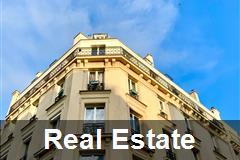
The conversion of the amnesty laws now offers six different paths for regularization, with factors such as the timing of the irregularity affecting the process.
The new legislation has made the process more complex, with different options available depending on the type of violation.
Costs are decreasing and the ways to rectify irregularities are multiplying
With the conversion, there are now six regularization options: factors such as the time of the non-compliance will affect the regularization process.Tolerances and partial non-compliances.
The Save Home decree, in its initial version, started from here, to begin designing one of the most discussed reforms in recent years.The conversion law, which took shape in the Chamber and was then confirmed by the Senate, has significantly changed the text.
On one hand, it has added many new options, while on the other hand, it has extended the existing ones.
The result is that now citizens and professionals will have to navigate through a toolbox that has become much more complex to manage.
Factors such as the time of the intervention or the date of the building permit could influence the qualification of the work and its regularization.
Thus, in some cases, one might end up paying a fine (albeit reduced compared to the initial proposals), while in other cases, no payment will be required.
Similarly, there are situations where it will be mandatory to go to the Municipality to request a Statement of Compliance or a regularization permit.
And other situations where no administrative procedure will be necessary.
The six available regularization options
In total, there are now at least six regularization options available. Three of these concern infractions committed before May 24th and "tolerated" by the law: this refers to the difference between what was declared to the Municipality (and authorized) and what was actually built on-site.The Save Home decree revises the concepts of executive and constructive tolerances: this second category is now divided into six levels, ranging from a minimum of 2% to a maximum of 6%.
Additionally, a unique 2% tolerance on hygiene-sanitary requirements (such as minimum room size, heights, and aero-illuminating ratios between windows and surfaces) has been added.
The other three regularization options refer to variations made before 1977 (allowed even if they led to non-compliances because there was no way to declare them to the Municipality at the time), violations already noted by the Municipality when issuing the occupancy certificate (to protect the legitimate expectations of the owners), and abuses that can be rectified with a compliance assessment: partial non-compliances and essential variations (including significant increases in volume, as provided by the conversion law).
The easiest paths
As mentioned, there are situations (those of tolerances) where the owner will not have to do anything to regularize the property until they need to submit a new enabling title to the Municipality when they want to renovate, divide, or modify the property. The positive effect will also be reflected in property transactions because at the time of sale, it will be sufficient to declare the presence of irregularities considered as simple tolerances, without paying fines.The most serious situations
In the situations considered more serious by the regulations, the procedures will multiply.The scenario with the most intersections is that of partial non-compliances, which in practice can be classified in different ways and may not always be rectifiable.
Consider the presence of a balcony of different dimensions than what was declared in the enabling title, perhaps because a larger room was chosen.
The most favorable scenario is when the Municipality has already noted the infraction when issuing the occupancy certificate, without ordering its demolition.
This irregularity will be treated the same as a constructive tolerance, therefore it will not require the payment of a fine or the initiation of a regularization procedure.
However, it will be difficult to concretely meet all the conditions set by the Save Home decree, in the version modified in the Chamber.
If this same non-compliance refers to a title submitted before January 30, 1977 (the entry into force of the Bucalossi law), the regularization process will change.
It will be necessary to regularize the work by submitting a Statement of Compliance and paying the same fines - up to a maximum of 10,328 euros - provided for compliance assessments.
However, it will not be necessary to comply with the criteria of the new "attenuated" double compliance (building regulations of the time and current urban planning regulations).
The advantage is not only technical: practically, even works that do not comply with the criteria set by the municipal zoning plan can be regularized.
The most severe non-compliances
However, it may happen that the same violation in our example was carried out after 1977 and was never noted by a municipal technician. In this case, the only alternative will be to proceed with a compliance assessment: a procedure that certainly has looser requirements than the previous regulations, but still requires compliance with the "attenuated" double compliance.Moreover, compliance assessments with the conversion of the decree have also been extended to essential variations.
And in terms of costs, the conversion has been favorable to property owners, providing a significant discount for those who have to pay fines: the maximum limit, which was previously over 30,000 euros, has been reduced to a third.
Fulvio Graziotto - fgraziotto@graziottolegal.com or mobile (+39) 3480017380 (09AM till 18:30PM CEST)

